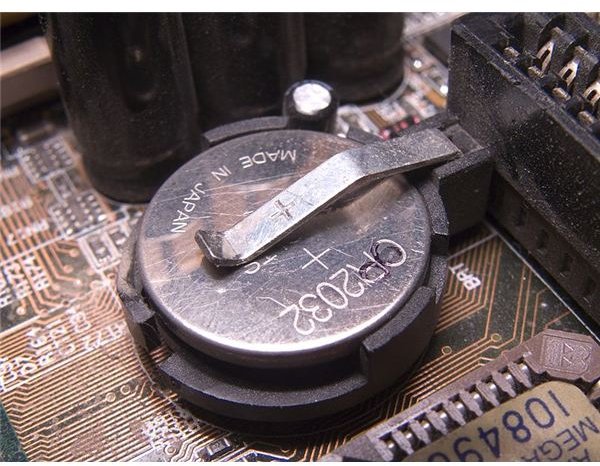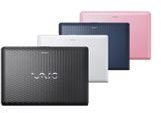Sony Vaio Hard Drive Isn't Seen On Laptop?
Vaio’s Common Problems
If you’ve had a few computers over the course of your life, chances are you’ve run into this issue whether it’s been on a Mac or a Windows machine. When the problem happens on a Vaio Laptop (an otherwise very strong device), you start up the computer, it gets to the booting screen, and it can’t locate your hard drive. Whether it’s because something is physically wrong with device or there’s a misreading in the firmware, this occurrence is a frustrating one to say the least, and it often means you’ll have to replace the whole drive.
In the number of cases where the drive doesn’t have to be replaced, the steps you could take to reverse the symptoms are often rather involved. This isn’t meant to scare you away from trying to fix your computer problems, but rather just to be as candid and honest as possible; this isn’t like fixing a keyboard. You need to get a little more in depth for this one, and while it’s not difficult per se, you may be put off by the amount of things you’ll be taking apart.
Reset the CMOS

CMOS stands for “Complementary metal–oxide–semiconductor” and it essentially is a really long word for “the thing that keeps your static RAM”. You see, you’re used to your computer having one big battery that you assumed powered everything that the computer used, but in fact, there is a second battery (hidden deep within the confines of the circuitry) that powers things like bits of the RAM and the clock. Often times, doing what is also referred to as a “hard reset” will kickstart things successfully enough that you shouldn’t need to try much more. This is also called “resetting the CMOS”. But how do you do this on a Vaio?
Firstly, take the laptop mostly apart so as you can see the insides of it and know that you’ll need a pretty solid knowledge of taking things apart and putting them back together properly, preferably a hands-on experience with Vaio laptops specifically. There are two places the CMOS battery is essentially located on Vaio models, though it varies depending on which type you have: Either it’s located directly underneath the keyboard, or underneath the palm rests. Either way, it’ll be relatively easy to locate.
Once you find it (a small, circular, metallic battery) simply pry it out of its placement, leave for a few minutes, and then put it back in. Put stuff back together, start the computer back up and see if you’re back in business.
Back-Up, Replace, or Recover

Generally, if this problem cannot be fixed with a CMOS reset, then you’re pretty much stuck. The only other option you have is to recover or back-up as many files as you can and replace the hard drive entirely. One option would be to send it into Sony (they have pretty good customer service), but to do this yourself you’ll first need to either boot from a disk as opposed to the hard drive itself, or boot from another hard drive and use your main drive as a slave drive.
To do this, you’ll need a second PC (preferably a tower for optimum flexibility) and an adapter to connect your laptop to it. This should let you route the laptop’s drive onto your computer as if it were an external hard drive, and once you do that, attempt to copy as many files as you want to keep onto another drive. If you still can’t access the files (you click the hard drive, but the files don’t appear) despite it being attached to another computer, you’ll need to try some drive recovery techniques. These are relatively easy and often don’t cost anything, but it is something you’ll need to know how to do before continuing on with the procedure.
Anyhow, once you’ve either backed up all of your needed data, or you’ve recovered the drive enough to either use it or back it up and save it, you’ll need to go out and get a new hard drive for your Vaio, and then install it in place of your old one. After you’ve done this, start up your PC, install Windows if needed, and you’re set to go.
Call Sony, But…
If you don’t want to replace your hard drive yourself, and you don’t want to void your warranty by resetting the CMOS, there is really only one option for you - give Sony a call. Tell them your problem and they’ll tell you to send it in and they’ll fix it for free, assuming you’re within a couple of years of buying the laptop. However, do not allow them to keep your old hard drive or to erase it without your permission. When you call, make it incredibly clear that you want your hard drive back so you can perform recovery on it and get your files back. Even if they say they can’t give it back, tell them that you bought and paid for one of their products and you expect that you’ll get to keep it and use it - even if it is broken. Generally, they cave pretty quickly.
If this is the route you decide to take, you’re in luck because there’s almost no chance they won’t be able to fix your issues. If you did one of the other things on this list and it worked, then I’m very glad. If you’re still struggling, post your issue in the comments section and I’ll help you out as best as I can.
References
- [Image] Wikimedia Commons, http://commons.wikimedia.org/wiki/File:CR2032_in_mainboard.jpg, Public domain
- [Information] Computing.net, http://www.computing.net/answers/hardware/sony-vaio-hard-drive-not-detected/44035.html
- [Image] Vaio Hard Drive, http://www.buy.com/prod/320gb-2-5-sata-hdd-hard-disk-drive-for-sony-vaio-vgn-aw120j-h-vgn/q/sellerid/23935673/loc/101/220939419.html
- [Image] Sony Vaio, store.sony.com/VAIO
- [Information] TechSupportForum, http://www.techsupportforum.com/forums/f217/operating-system-not-found-hdd-not-in-bios-sony-vaio-279929.html
